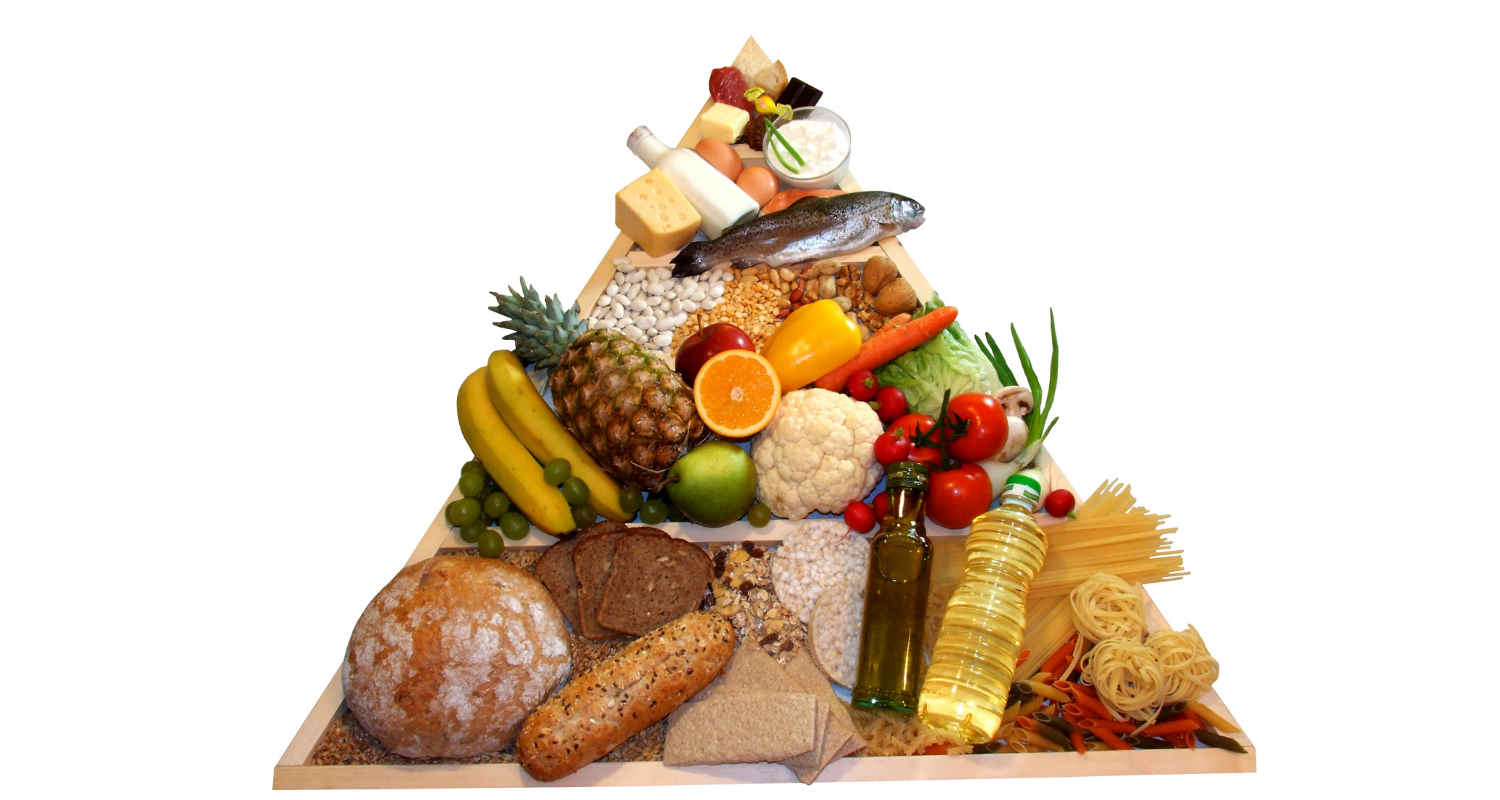Once upon a time, the USDA utilized the Food Pyramid to model good nutrition through consuming balanced meals. Based on a 2,000 calorie diet, each recommended food group had measured amounts (in ounces or cups) of foods that should be eaten daily. In recent years, the model switched from a pyramid to a plate which makes it easier for both adults and children alike to visualize the quantities and proportions of the foods they should be eating. A one-stop resource for nutrition, ChooseMyPlate.gov incorporates information regarding exercise, weight management, healthy eating tips, and fun activities to make it simple for anyone to develop healthy, balanced eating habits.
The Food Pyramid model once gave users an accurate depiction of balanced nutrition. However, to lay persons (especially children), it was not easy to interpret. ChooseMyPlate.gov provides these simple guidelines to follow for basic nutritional needs:
1) Half of the plate should be vegetables and fruit with vegetables being consumed in greater amounts.
2) The other half of the plate should contain whole grains and proteins with a greater emphasis on consuming whole grains.
3) Dairy foods are pictured in a cup alongside the plate. Along with oils, they should be eaten in smaller amounts.
So what do these guidelines mean for fitness enthusiasts? Well, for starters, the ChooseMyPlate.gov guidelines are a baseline for meeting basic nutritional needs. Those with very active lifestyles must consider their additional energy needs and fitness goals. If weight loss is a consideration, the overall caloric intake may need to be reduced. Protein (and water) intake should be increased while reducing sugar and fat. To generate enough fuel for exercise, the calorie increase could come from slow-releasing carbohydrates like oatmeal or high fiber foods like fresh fruits.
Bodybuilders will consume diets that are high in lean protein (for building muscle and tissue repair), whole grains (for fuel and fiber), and steamed vegetables (for essential vitamins, minerals, and fiber). The overall caloric intake must support multiple daily workouts that consist of weight training, cardiovascular exercise, and flexibility components.
Endurance athletes must also utilize the Food Pyramid changes to support their training regimens. The diet should center on adequate amounts of carbohydrates found in whole grains, fruits, vegetables, and dairy while ensuring that muscle tissue is preserved by consuming protein in needed amounts. Failing to maintain minimum amounts of carbohydrates in the body will force it to break down muscle to rob it of its energy stores (glycogen).
Even recreational exercisers must be aware of changes to the Food Pyramid to ChooseMyPlate.gov. Following the basic guidelines will bring ease and simplicity to meal planning on more active days. Depending on the chosen activity, it may be necessary to increase the amount and/or types of foods eaten.
The Food Pyramid model precisely measured the recommended amounts of food from each group. Now, with ChooseMyPlate.gov, it is easier for all exercisers (from novices to elite athletes) to ensure good, balanced nutrition and make adjustments based on levels and intensity of physical activity.

Leave a Reply